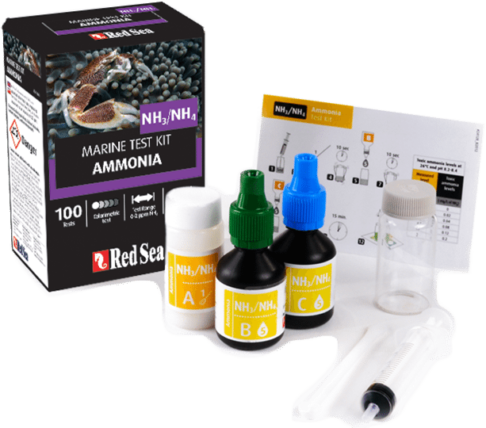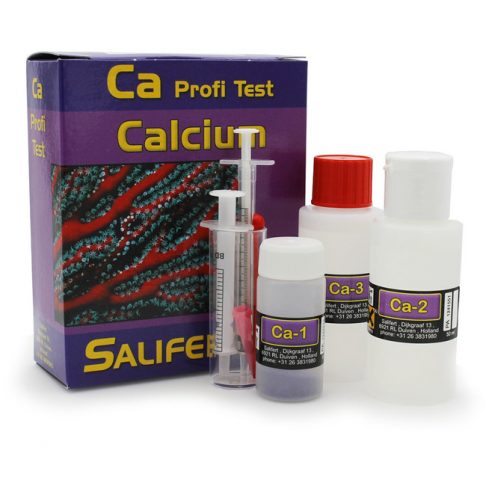For Determining the Phosphate Concentration
Phosphates (PO43–) are important nutrients for all plants and are vital for the energy metabolism of every living cell. Phosphates are released into the aquarium water via food and the decomposition process of organic matter. However, an unregulated increase in the phosphate concentration creates problems, such as significant algae growth. In addition, phosphates in saltwater aquariums can seriously inhibit the deposition of calcium carbonate in the skeleton formation process of hard corals and, in turn, for their growth. On the other hand, there can be a shortage of phosphate if there is a high stock of plants and/or corals and a low fish population. In this situation, phosphate will need to be added.
The phosphate concentration in natural saltwater is approximately 0.06 mg/l (ppm). However, the phosphate concentration in coral reefs may be much lower, typically between 0.01 and 0.02 mg/l (ppm). The objective is to establish an appropriate level in relation to the number and type of aquarium inhabitants. In freshwater applications, a phosphate concentration of up to 0.4 mg/l (ppm) is suitable; however, 1 mg/l (ppm) should not be exceeded. Even a concentration of 0.02 mg/l (ppm) is adequate for supplying aquatic plants with nutrients. Therefore, the phosphate concentration in the aquarium water should be tested regularly.
With the Tropic Marin PO4-Test, the phosphate content can be determined using a finely-tuned color chart which has a concentration range of 0.03 – 1 ppm.
- Measurement Range of 03. – 1.0 mg/L(ppm)
- Accuracy of 0.05 mg/L(ppm)
- Up to 50 Tests
- Conversion Table Included
Instructions:
- Shake the dropper bottles before use! Assemble and prepare the comparator.
- Rinse out both glass cuvettes with tap water and then several times with aquarium water.
- Fill each glass cuvette with exactly 5 ml of aquarium water using the dosing syringe. Put one of the two water samples aside as a reference.
- Add 10 drops (for saltwater) or 12 drops (for freshwater) of test reagent A to the test cuvette, close the glass cuvette using the stopper and briefly shake the sample.
- After that, add 4 drops of test reagent B, close the glass cuvette once again and briefly shake it.
- After 2 minutes of development time place the open test cuvette and the reference cuvette with the water sample into the comparator. Place the comparator on the color card in such a way that the reference cuvette is sitting on a colored field and the test cuvette on a white field.
- Now compare the opposing fields. To do this, look into the open cuvettes from above. Move the comparator on the color card until both cuvettes match exactly.
- Read off the phosphate concentration under the relevant color field. If the colors do not match exactly, an intermediate value can be estimated.
- Rinse out the glass cuvettes and the syringe thoroughly with tap water after the measurement process.
What’s Included?
1x Instruction Card
1x PO4 Pro Reagent A
1x PO4 Pro Reagent B
1x PO4 Pro Reagent C
2x Test Vials
1x 24mL Syringe
Color Comparative Card






